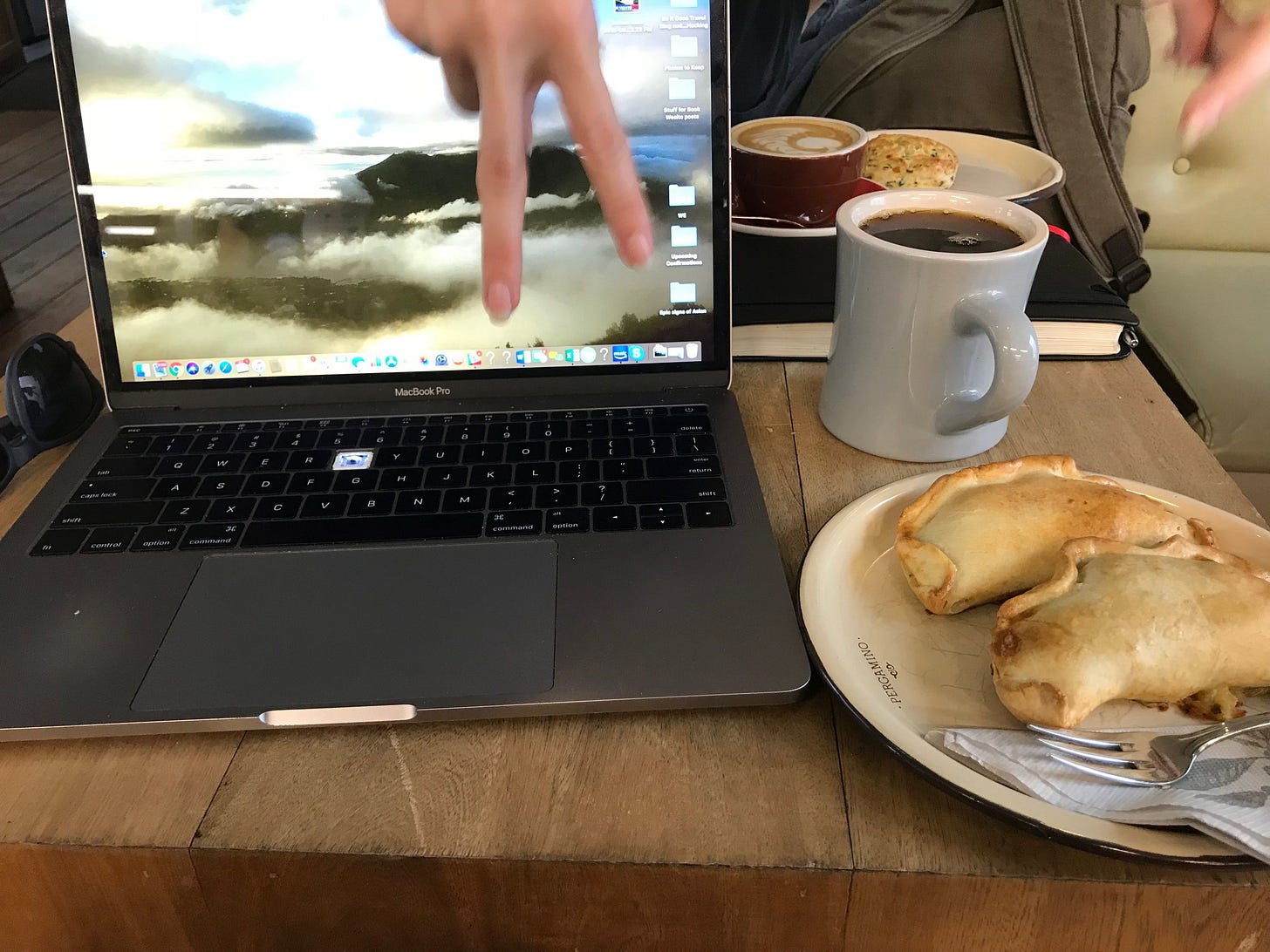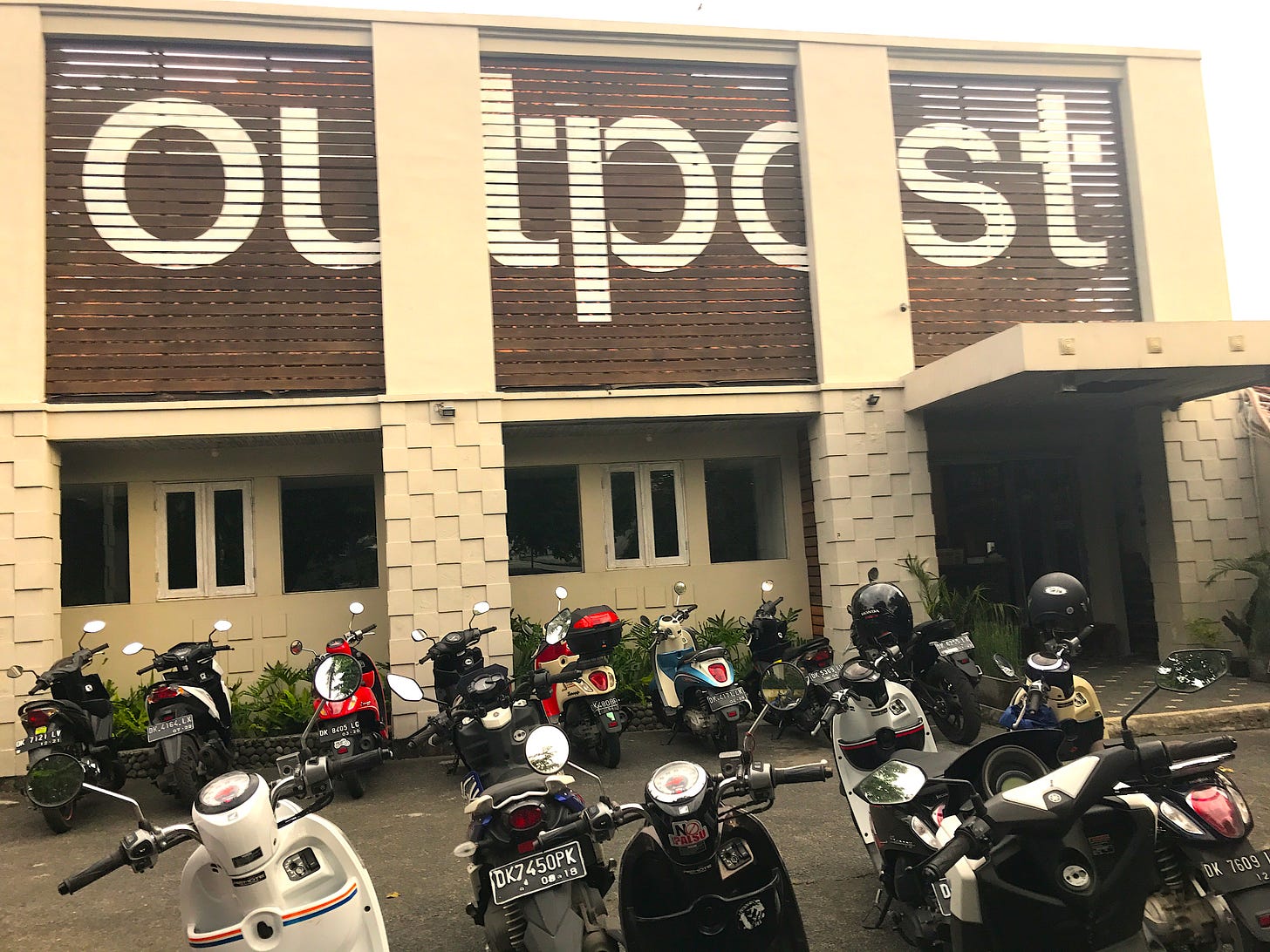2020 introduced the world to remote work, but not to its real perks
Or, why WFH is not remote work.
When there’s no need to be “present” from 9 to 5, there’s no need to do anything other than actually work when you sit down to do so.
Hey reader,
The remote work lifestyle is an incredible — albeit privileged — way to live. As a laptop warrior or digital nomad or whatever you want to label yourself, you have incredible freedom to build your life around the things that are important to you.
To me, this means getting outdoors in the mountains and exploring. It means traveling when and where I want to, and working along the way.
It’s about living a healthy, active lifestyle that is both productive and fulfilling, in both professional and personal settings.
Over the past three months, I’ve also learned how much I enjoy spending time with my infant daughter in the afternoon and finishing up work in the evening.
This is not possible in many professions. But it is in an increasing number — over 50 percent, according to a Gallup poll.
This week’s essay diverts from last week’s. Rather than an adventure narrative, I have for you today a deep dive on why your buddy who tried remote work during the pandemic, just to find he missed the office, never really experienced remote work.
It wasn’t entirely his fault. Indeed, it simply wasn’t possible to post up from a far-flung coworking space during the midst of a global pandemic.
Today we also debut one of my favorite terms — the “after-worker.” Read the essay below to find out what I’m talking about.
And please forward to that friend — this will make a good read at the office.
Community Shoutouts
Thanks to Jim for his thoughtful feedback on last week’s essay. As he put it, I sure am lucky I found that “twig” to hold onto.
Massive thanks to the handful of people who forwarded or shared the email! The “read” count far exceeded the subscriber count, an inspiring note for Mountain Remote’s first dispatch.
And lastly, thank YOU for signing up early, I appreciate you. Apres-beer on me next time around. If you haven’t signed up for a free subscription, tap the button below. No spam, ever.
And now for the meat and potatoes. . .
WFH is not remote work. At least, not all of it.
Remote work means the ability to actually be remote — whether that be in your home or on the other side of the world. With travel restrictions and lockdowns in place, those who experienced the WFH life over the past two years have, in most cases, missed out on the best part of the lifestyle — location independence.
Statista, the statistics tracking site that in my reporting experience publishes the most reliable statistic-based data on the web, found that just 17 percent of Americans worked from home full-time before Covid. This number shot up to 44 percent during the height of the pandemic.
With around 157 million employed workers in the country, that’s a lot of people — some 69 million — who worked remotely for the first time over the past two years.
Thing is, many experienced only the confining aspect of being stuck at home, often with kids, roommates, partners, or other family members locked in the same predicament.
Gorging on empanadas is a prerequisite when coworking in Medellin.
The real perk of remote work is the ability to run your workday how it best works for you
There are the obvious perks to remote work. The ability to live where one wants. No rush-hour commute. No office politics (though, Slack enables its own forms of digital drama, as The Atlantic noted and as any of us who deal with the platform on the daily can confirm.
And of course, there’s the ability to don a “Zoom shirt” and sweatpants even when facing a big client call.
But the real perk of remote work is its efficiency. When there’s no need to be “present” from 9 to 5, there’s no need to do anything other than actually work when you sit down to do so.
(For more on this, I recommend the book Deep Work by Cal Newport)
This frees up loads of time over the course of a year.
Take your average workday. Not the busiest day, nor the laziest. Just, the average day. How much time do you spend actually being productive?
Five? Seven? Two?
This depends on your job and your level of commitment to it, of course. But what I’m getting at here is that no matter how much lagtime you have in an average workday, remote work either removes it entirely or pushes it to the beginning or end of the shift.
In my typical day writing and editing content for digital publication, I might have two stories I need to turn around for publish, each taking about two hours. There are 30 minutes or so of emailing, an hour spent on a call, and perhaps 20 minutes of back and forth over Slack with colleagues, hammering out loose ends.
That’s six hours, give or take, of actual work.
If I were to be stuck in an office for eight hours, the inefficiency of the added time spent scrolling social media, attending unnecessary meetings, or gossiping with coworkers would add up real quick. Not to mention the commute to and from.
Ten hours per week quickly becomes 520 hours per year, or about 80 half-days of snowboarding and a solid two afternoon hikes or bike rides per week, which I affectionately refer to as “after-workers.” (told you it was coming)
This is why remote work is awesome — you can add after-workers to your routine without having to ask for permission. Without having to “duck out early” or worry about your absence being noticed.
When the work is done, the laptop closes — and I move on with my day.
The future of work is defined by metrics, not time spent.
A colleague of mine, who works full-time on a contract basis, recently told me, “If I want to take a call while I’m on the bike at the gym in the afternoon, I’m going to do it. And if my most productive writing period is in the evenings while I sit in bed with TV in the background, there’s no one to tell me I can’t be working then.”
Is he or I cheating the company, the client, or the employer? Absolutely not. A properly negotiated salary — particularly a contracted one — ensures deliverables, not a set amount of time spent on them.
Any good client or boss knows this. And remember, we’re talking average days. There will be busier ones.
How much time do you save by having control of your own schedule?
Outpost Coworking in Ubud, Bali — the greatest place on Earth. Mine is second motorbike from top left.
Location independence has been severely restricted these past two years
Location independence means the ability to base oneself where one wants, and to be able to earn a living here, there, or anywhere. With this perk, there’s no need to live in an expensive metro area simply because your employer is located there.
This is the second biggest remote work perk that has been restricted by the Covid-19 pandemic. Those who experienced remote work for the first time in 2020 likely have yet to cash in here.
The colleague I mentioned above very well may be taking that call at a gym in Vancouver or a gym in Vail or in Austin, Texas. Why does it matter?
It doesn’t.
We’re fortunate in the 21st Century to have the technology to enable remote work and location independence. Those of us fortunate to be entrepreneurs, self-employed, or remote employees — “knowledge workers” — who spend their days staring at a laptop, can take advantage of this technology.
Gen Xers and younger generations are set to have higher levels of autonomy in their careers than previous generations. Autonomy at work has been linked to everything from better coronary health to higher levels of engagement and reduced burnout.
Being able to live where you want to live allows one to pursue their passions both professionally and personally. This is particularly important when raising kids.
The simple fact that you’re reading this newsletter signals that you agree with the sentiment that getting out for an afternoon hike or bike ride (the aforementioned “after-worker”) or being able to take a few morning laps on a Tuesday powder day (ahem, “before-worker?”) makes you happier.
This in turn makes you more motivated to succeed in your career, if for no other reason than you don’t want to give up that perk.
Many have enjoyed the slower pace of life
Restrictions aside, even those who WFH for the first time during the pandemic have found some repose.
High-authority publications including The Guardian and The Wall Street Journal have reported on how people found the slower pace of life induced by the Covid-19 pandemic to actually be good for them.
When you don’t have to wake up three hours before work starts just to prepare for, and then commute to, the workday, you have a lot more time to prioritize mental health and mindfulness (as evidenced, for example, by the boom in subscriptions to meditation apps).
This also makes it easier to raise kids. And take care of family members. Maybe take that trip to Moab on Tues-Thurs instead of Fri-Sun in order to avoid the weekend warriors.
Mountain Remote News
Japan and Singapore boast the world’s most powerful passports, with visa-free access to 192 countries.
Do you follow the Epic Lift Lines Instagram page? If so, here’s more dread.
Coworking spaces are taking over European ski resorts, and I really want to go
But for those of us in the states, there are companies like Alt Space, which runs coworking spaces up and down Colorado’s western slope, from Telluride to Ridgeway to Grand Junction. You can find me at 750 Main St. in GJ at least a few days per week.
Or, be like me and rely on Coworker.com for your coworking spots. Biggest win — finding Outpost Coworking in Ubud, Bali, back in 2017, the greatest place in the entire world.
Have you ever heard of the super-niche Balinese sport of buffalo racing? In the latest ep of my No Blackout Dates podcast, we interviewed filmmaker Marko Randelovic, who just released a documentary about just that — called Makepung.




